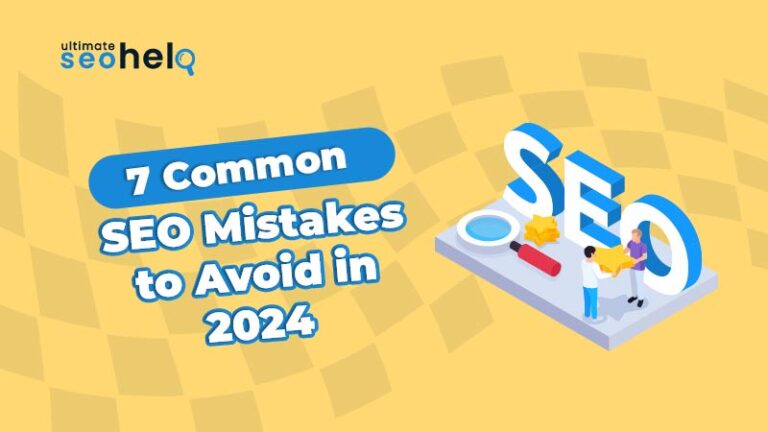You’ve worked hard to build your small business, the late nights, the loyal customers, the quality you’re proud of. But despite all those efforts, people in your own area might not even know you exist.
They might be searching for exactly what you offer, but if people can’t find you online, then you’re really behind. So, how do you bring in more local customers? Well, you can if you start doing local SEO.
But if you are not aware of what Local SEO is, then don’t worry. We’ll help you understand what local SEO is and how local SEO works for businesses by attracting local customers to your offline store.
What is Local SEO?
Local SEO is a form of SEO that helps local businesses increase their search visibility by optimizing their websites and appearing at the top of SERPs. This is why Local SEO is essential for small businesses that operate on a small scale.
For example, it helps your local business to be easily seen by potential customers who look for one specific location, like “Best bakery in Chicago,” “coffee shops around me,” etc.
Local SEO focuses on marketing your brand, products, and services to local leads and customers. So, local SEO is more specific to a particular location than general Google searches.
What is the Importance of Local SEO?
Since most people use Google to search for businesses near them, doing Local SEO can make your business more visible. It also helps you:
- Boost your presence online.
- Be seen on the Google map for people to see.
- Reach local customers who search for your services/products.
- Bring people to your actual location.
- Get more targeted traffic, which brings more leads and improves your chances of conversion.
- Makes your business credible and builds trust.
Local businesses use local SEO to:
- Get the highest conversion rates.
- Reach local customers using mobile phones or tablets to find the best local businesses.
- Get a good return on business.
What are the Three Pillars of Local SEO Success?
If you want your business to stand out from other businesses in local search results, you need to focus on the three main areas that matter most: visibility, reputation, and relevance. Let’s break them down one by one in the following points:
1. Visibility
The first step to local SEO success is to make sure that people can actually find your business online. If people can’t find you, they can’t visit or buy from you. So, here’s how you become more visible:
- Make Google My Business Profile: This helps your business appear in Google Search and Maps when people nearby look for services like yours.
- Keep your Details Consistent: Your business name, address, and phone number (NAP) should match exactly everywhere; on your website, social media, and directories.
- Use Local Keywords Naturally: Add phrases that locals search for, such as “best coffee in [city]” or “affordable salon near [area].”
When your information is accurate and complete, Google is more likely to show your business to local customers who are searching for what you offer.
2. Reputation
Being found is step one. Being chosen is step two. A business with strong reviews and positive feedback will naturally attract more customers. Here are some ways you can build your reputation:
- Ask for Reviews From Your Customers: Encourage happy customers to leave a quick Google review after their visit. A simple, polite request works best.
- Respond to all Reviews: Thank people for positive feedback and handle negative reviews calmly and professionally. This shows you care.
- Share Real Customer Stories: Post photos, testimonials, or shout-outs on your social media to build trust and show that real people love your business.
A good reputation doesn’t just bring in more customers; it also helps your business to rank higher on Google.
3. Relevance
The final pillar is about staying connected and active within your community. When you post regularly and take part in local activities, Google sees your business is real and involved. Here’s how you can stay relevant:
- Post Updates and Offers: Share new arrivals, discounts, or seasonal deals on your Google Business Profile.
- Engage with Your Community: Post about local events, festivals, or causes your business supports.
- Collaborate with other local brands: Partner with nearby businesses or local influencers to grow your visibility and reach new audiences.
When you’re active in your area and online, customers and search engines both see that you’re a genuine, engaged local business.
How to Improve Your Local Ranking?
Now that we have talked about local SEO and about its three pillars, let’s see how you can use it to improve your local ranking and bring in more customers.
You don’t need to be a marketing expert to improve your local ranking; just a few changes like learning how to rank for near me keywords and you can help you appear higher in local searches and attract more customers. Here’s how you can start today:
1. Optimize Your Google My Business Listing
If there’s one thing that can immediately boost your local visibility, it’s your Google Business Profile. It allows you to improve your local ranking in Google search results and Google Maps. Businesses can create free business listings on Google My Business, so their business shows up for relevant searches in their area.
You can use Google My Business to improve your business’s local ranking. Here’s how:
- Claim your Listing: Provide your full business details like name, business category, address, the exact location on a map, business number, and website (if applicable) for this.
- Select the Right Category: This helps Google match you with relevant searches. For example, “Bakery” vs. “Cake Shop”. These small details really matter.
- Add Photos and Videos: Upload real images of your store, staff, or products. Businesses with photos get more clicks and visits.
- Update Regularly: If your hours change during holidays or you move locations, update them immediately.
Keeping your profile updated and active not only improves your ranking but also builds trust. People are more likely to visit a business that looks “alive” online.
2. Get Reviews
Reviews are the online version of word-of-mouth. When potential customers see others sharing good experiences, they’re more confident about choosing your business.
If you encourage your offline customers to give reviews to your business online, it can be advantageous for you.
Positive reviews improve your business visibility, enhance your image, and encourage more local customers to buy from you. Once you get reviews, positive or negative, make sure you respond immediately to them.
Even if the review is negative, you can address the issues quickly and calmly. You show that you value your customers’ feedback by replying to their reviews. You can even request that your customers give you a review on Google.
Positive reviews help you rank better; they help others see that your business is highly recommended, increasing your chances of gaining new customers. The more fresh and genuine reviews you collect, the more Google trusts that your business is active and worth recommending.
3. Use Local Keywords Naturally
Local keywords are words and phrases that tell Google where you’re located and who you serve. They help connect your business with people searching in your area, for example, instead of just “plumber,” think “plumber in downtown Austin” or “emergency plumbing near East Austin.”
Here’s how you can use local keywords effectively:
- Use your city, neighborhood, or landmark names in key parts of your website, such as your homepage, about page, and service pages.
- Add location details in your title tags, meta descriptions, and image alt texts (naturally, not stuffed).
- Mention nearby areas you serve; this helps you appear for a wider range of local searches.
- Create content around local topics, like “Best spots for coffee near XYZ park”.
When people search for services near them, Google matches results based on relevance and location. By weaving local terms naturally into your content, you make it easy for both Google and your customers to find you.
4. Link Building
Link building is one of the most effective and often overlooked parts of local SEO. In simple terms, it means getting other trusted websites to link back to yours. The more high-quality local links you have, the more Google trusts your business, and you can rank higher.
Make sure to target authority websites in your region so the linking domains are more relevant to your target location. Earning links from websites with high domain authority in your local area gives your business an advantage over your competitors. You can also gain valuable backlinks from local sites through guest posting.
5. Create Content That Speaks to Your Community
If you want to stand out in your area, one of the best things you can do is create content that truly connects with your local audience. Google pays attention to what you talk about, and if your content shows that you’re part of the community, you’re more likely to show up in local searches.
However, local content doesn’t mean writing long blogs that are full of technical details. It’s simply about showing that your business is active and relevant in your city or neighborhood. Here are a few easy ways to do that:
- Talk about local events or news. For example, if there’s a food festival or charity run happening nearby, write a short post about it or share photos on your Google profile.
- Highlight local collaborations. Team up with nearby stores or creators and share those partnerships online. This not only builds connections but also earns local backlinks.
- Feature customer stories. Share real experiences from your local customers; it makes your brand feel personal and trusted.
- Create mini local guides. Write a fun list like “Top 5 Places for Dessert Lovers in Austin” or “Weekend Spots Near Our Café.”
Bottom Line
Local SEO is a simple yet powerful way to bring more people to your store. So, use local SEO strategies to boost your sales, enhance your online visibility in local searches, and grow your business. You could even get the help of a local SEO expert to make your local business grow. So, which strategy are you thinking of to improve your local ranking?



